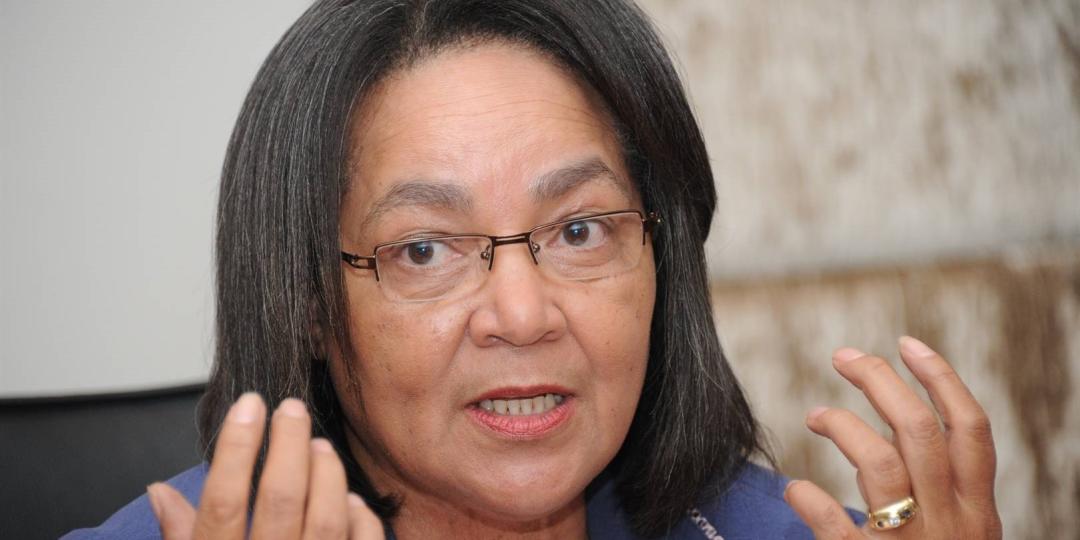Yesterday (Tuesday, December 12) as part of the National Tourism Safety Strategy, the Minister of Tourism, Patricia de Lille, deployed the first tourism monitors in Hazyview, Mpumalanga.
This was launched in conjunction with the Deputy Tourism Minister, Fish Mahlalela, Mpumalanga Police Commissioner, Lieutenant General Semakaleng Manamela, the CEO of the Mpumalanga Parks and Tourism Agency, Mduduzi Vilikazi and other provincial tourism stakeholders.
The Department of Tourism budgeted R174.5 million (€8.7m) to train more than 2 300 tourism safety monitors in South Africa during this financial year.
The Tourism Monitors Programme is part of the broader tourism safety measures identified in the National Tourism Safety Strategy. The strategy contains measures identified by partners who form the National Tourism Safety Forum, which comprises all three spheres of government, the South African Police Service, the National Prosecuting Authority and the private sector as represented by the Tourism Business Council of South Africa as well as local and provincial tourism authorities and agencies.
The key objectives of the programme include: enhancing tourism safety awareness at key tourism attractions and sites, upskilling of unemployed youth and reducing tourist vulnerabilities.
The tourism monitors are placed in key attractions/sites with high volumes of tourists or in areas posing a high potential risk to tourists.
The key performance areas of the appointed tourism monitors include:
- Patrolling within the identified attractions and sites/areas.
- Raising tourism awareness and providing information to tourists about attractions and the country.
- Reporting any crime incidents to SAPS and other relevant enforcement agencies.
- Assisting in tourist victim support.
“We have worked closely with the Mpumalanga Parks and Tourism Authority on finalising the appointment and deployment of tourism monitors who will be deployed in various areas, including the Graskop/Blyde River area and Hazyview,” said De Lille.
220 monitors in Mpumalanga
In total, 220 tourism monitors will be deployed in Mpumalanga, including in the Thaba Chweu Local Municipality: Lowveld View, God's Window, Pinnacle, Berlin Falls, Mac Falls, Sabie Town, Graskop Town, Pilgrim’s Rest, Gorge Lift and Lydenburg.
In the Nkomazi Municipality: Lebombo Border Post and Jeppe's Reef Border Post. In Mbombela: Kruger Mpumalanga International Airport as well as sites in the Hazyview, Albert Luthuli, Msukalingwe and Emakhazeni Municipalities.
The placement of Tourism Monitors in the remainder of the provinces will take place over the coming weeks.
The 2 305 tourism monitors will be deployed as follows:
- Eastern Cape 150
- Free State 150
- Western Cape 250
- Gauteng 100
- Limpopo 100
- KwaZulu Natal 200
- Mpumalanga 220
- North West 100
- Northern Cape 70
- iSimangaliso Wetland Park 200
- Ezemvelo Nature Reserve 150
- SANBI Gardens 130
- Acsa airports 135
- SANParks 350
Third feedback session
Yesterday, the National Tourism Safety Forum held its third meeting for the year, where all partners provided updates on measures to enhance tourism safety for all visitors.
“South Africa is a popular destination to local and international travellers, however crime is an unfortunate reality affecting tourists. While it is the mandate of the police to provide safety and security services, the Department of Tourism, all three spheres of government and the private sector have come together to do our part with additional measures to enhance tourist safety,” highlighted De Lille.
“As part of the National Tourism Safety Strategy, the Department of Tourism has a Memorandum of Understanding with the South African Police Service (SAPS) and we have been implementing a number of initiatives.”
Some of the initiatives implemented are:
- Joint safety awareness sessions;
- SAPS assisting the department with the vetting of tourism monitors;
- SAPS has developed a coding system that will be provided to all police stations to capture information related to crimes against tourists. The system will assist in providing a clear profile of the types of crimes against tourists;
- SAPS has also developed a Safety Learning and Development Programme for the tourism monitors.
Victim Support Programme
Another aspect of the National Tourism Safety Strategy is the Victim Support Programme (VSP) running in some provinces to support victims of crime.
The Department held a Victim Support Programme (VSP) workshop earlier this year to create a Standard Operation Procedure/‘How-to Guide’ for the establishment of the VSP in other provinces.
The Standard Operating Procedure for the VSP been finalised and will be shared with all provinces to ensure that the remaining provinces start the process to establish their own VSP.
“We are well aware that there have been several attacks on tourists in various areas in recent weeks and months but we are determined to work together with all stakeholders to enhance tourism safety measures,” emphasised De Lille.
“Working with all three spheres of government, the South African Police Service, Provincial Tourism and Law Enforcement Authorities, the private sector and communities, we will ensure that our beautiful country, with all its magnificent sites and people, is safe for domestic and international tourists to explore.”
Diplomatic Corps engagement
As part of the National Tourism Safety work, in mid-November De Lille also held a Tourism Safety engagement with members of the Diplomatic Corps.
The session was attended by 115 participants, including Ambassadors, High Commissioners, Attachés, and the embassy officials who included the locally recruited personnel.
“The purpose of the session was, amongst others, to share South Africa’s programmes, interventions and strategies towards tourist safety.
“The session provided prerequisite information intending to enable the Diplomatic Community to appreciate South Africa’s efforts towards tourist safety and to further transmit the information to their citizens in countries of origin who are planning to visit South Africa in the near future,” concluded De Lille.























